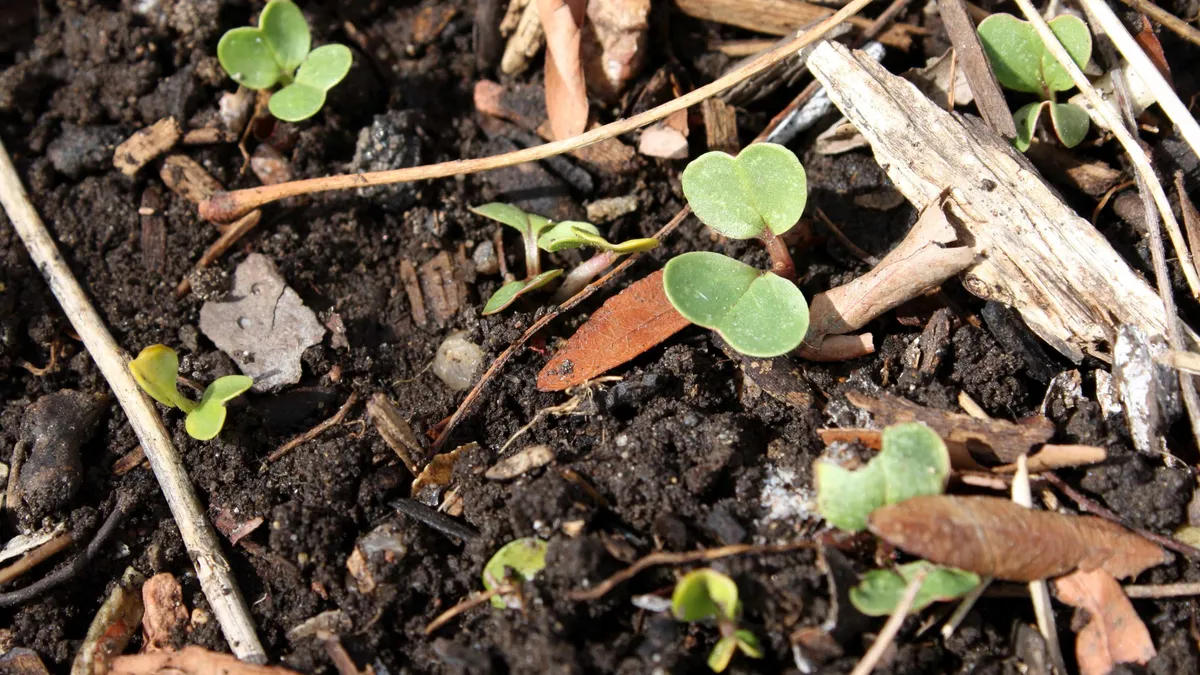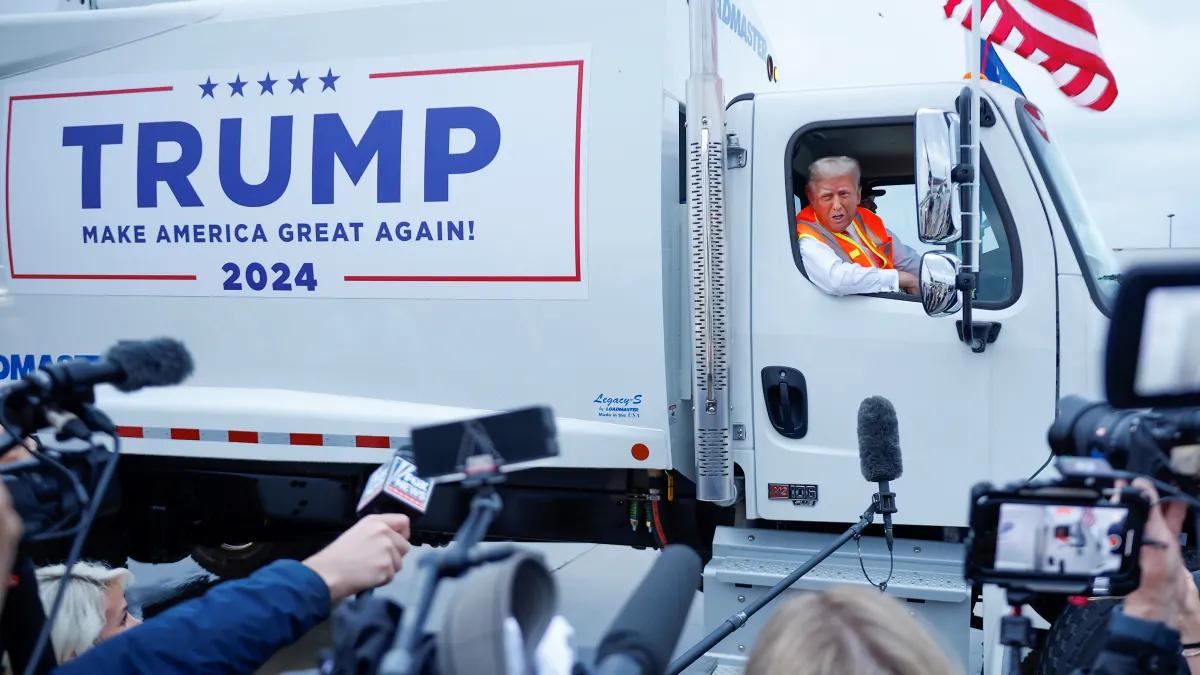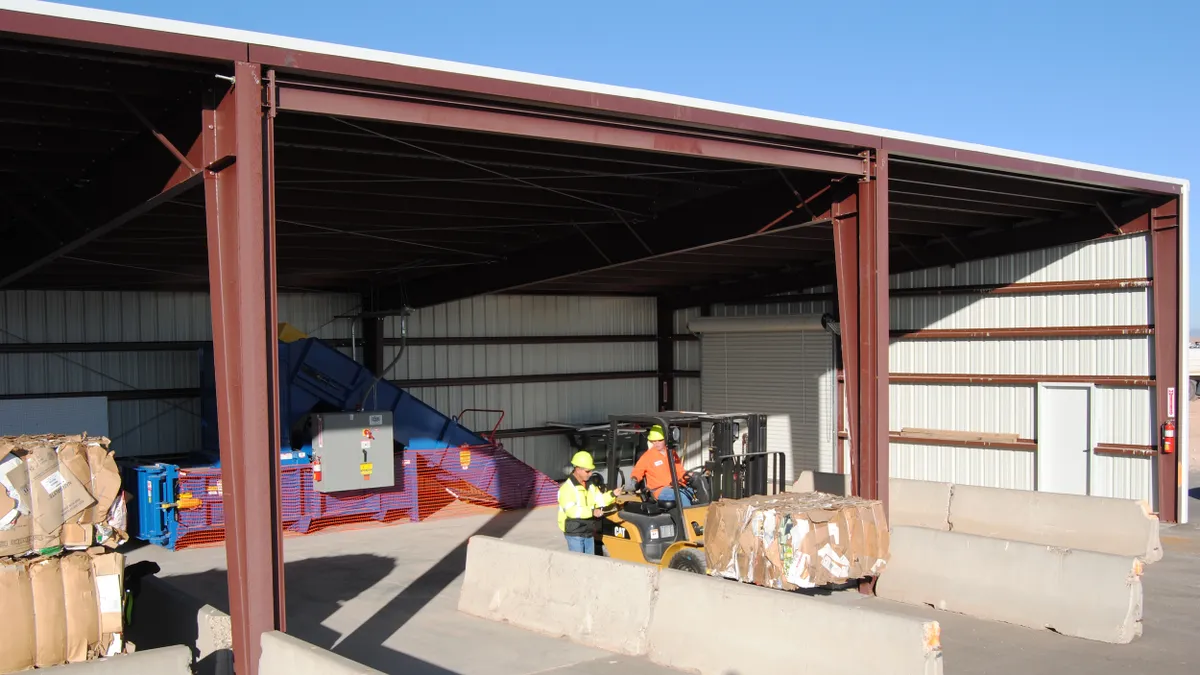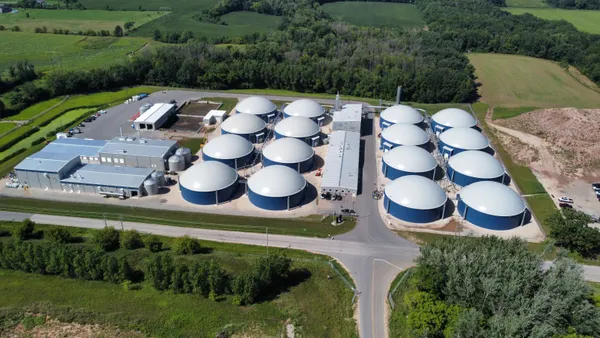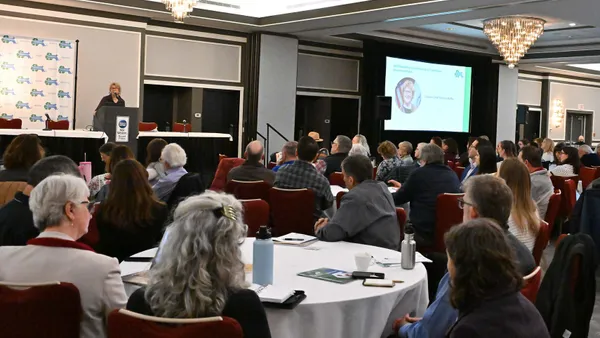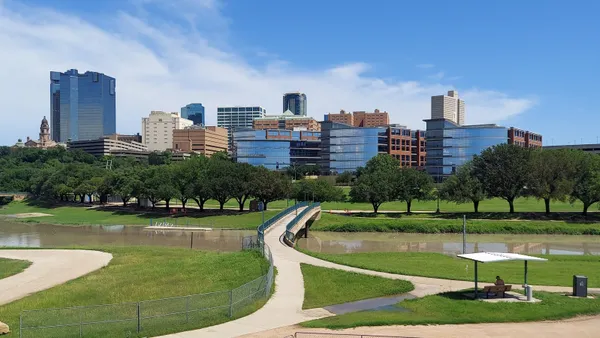Dive Brief:
- A new report by Frontier Group and U.S. PIRG Education Fund urges communities to invest in local composting programs, outlining various environmental, public health, agricultural and climate benefits of organic waste diversion.
- According to the report, 326 municipalities in the U.S. offer some form of curbside food waste collection. PIRG estimates such programs can reduce the amount of food and yard waste sent to landfills and incinerators by at least 30%.
- "Composting is a huge part of the waste solution — or has to be," Alex Truelove, report co-author and zero waste director for the U.S. PIRG Education Fund, told Waste Dive. "We hope this report will expose benefits people haven't considered and show them there's a path forward."
Dive Insight:
According to the report, 69% of organic waste produced in the U.S. is landfilled or incinerated — a costly system accompanied by a slew of environmental and public health consequences. Composting, which paves the way toward soil replenishment, increased food production and greenhouse gas reduction, is described by the authors as a "common-sense solution to our waste problem" — albeit one that often flies below the radar.
"There's less of a history in terms of successful municipal composting programs — it's a relatively new thing," said Truelove. "There's sort of a stigma around it — composting is something you do in your backyard, but not something with an organized system."
That assumption, however, is being increasingly supplanted by broader recognition of composting's benefits. In the past five years, the number of communities offering collection programs has grown by 65%. Most of these programs, according to the report, are run in conjunction with private haulers and composting facilities — Prince William County, Virginia, for example, partnered with Freestate Farms to expand its local composting facility, while municipalities such as Washington, D.C. and Boston allow composting companies to operate independently within the community.
"Sometimes there's this feeling that private companies and municipal programs are at odds, which is not necessarily the case," Truelove noted. "A lot of communities are doing really well with public-private partnerships."
The results, according to the report, are readily apparent. Nutrient-rich compost helps replenish topsoil and prevent future erosion, replacing the need for synthetic chemical fertilizers that deplete soil, contribute to air and water pollution, and generate nitrous oxide. Diverting organic waste also significantly decreases landfill methane emissions: according to PIRG, composting the 50 million tons of food and yard waste landfilled in 2015 would have resulted in net negative emissions of 14.8 million metric tons of carbon dioxide equivalent — the equivalent of 3 million cars.
The report offers a series of best practices for launching and supporting composting programs, including:
-
Making organics pickup cheaper than trash disposal — often via programs such as Save Money and Reduce Trash (SMART) or Pay-As-You-Throw (PAYT),
-
Providing composting education to residents and businesses,
-
Requiring large commercial organic waste producers to divert waste to composting facilities,
-
Incorporating composting into curbside pickup, and
-
Buying back locally-produced compost for use in public projects.
In addition, the authors suggest, federal and state governments must support local efforts by subsidizing the creation of composting facilities and programs through grants, loans and other financial mechanisms.
While the cost of food waste recycling relative to landfilling is frequently cited as a prohibitive factor, Truelove dismissed this logic as myopic.
"You have to think about why it's considered cheaper to landfill, and that often comes down to a value judgment," he said, pointing out the adverse economic implications of environmental degradation and climate change. "If you consider all that, composting often comes out to be more affordable in the long run."



